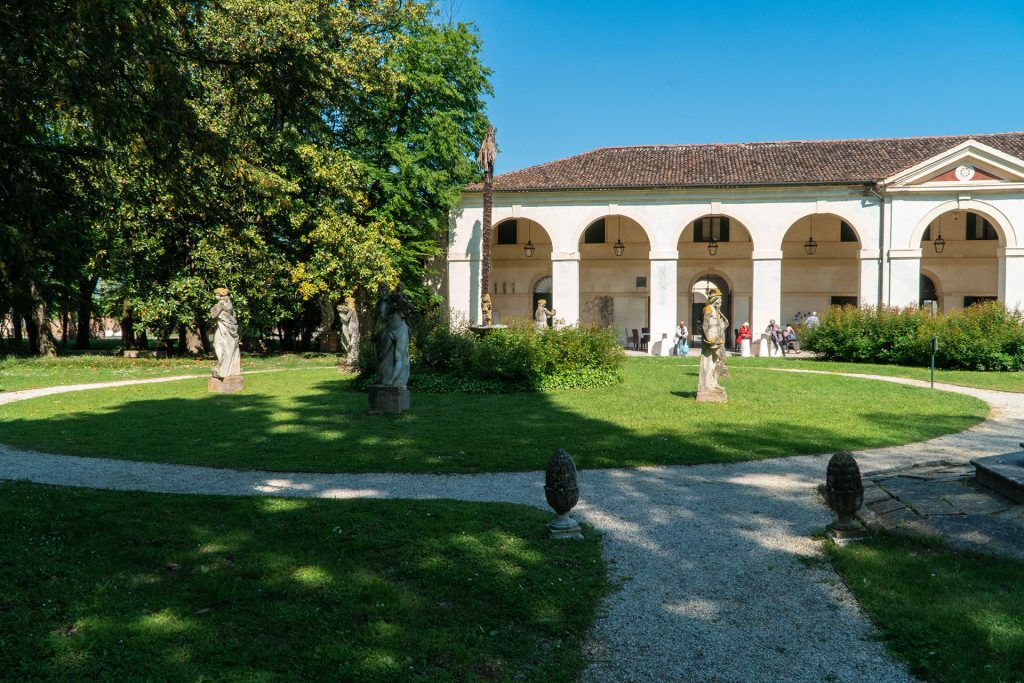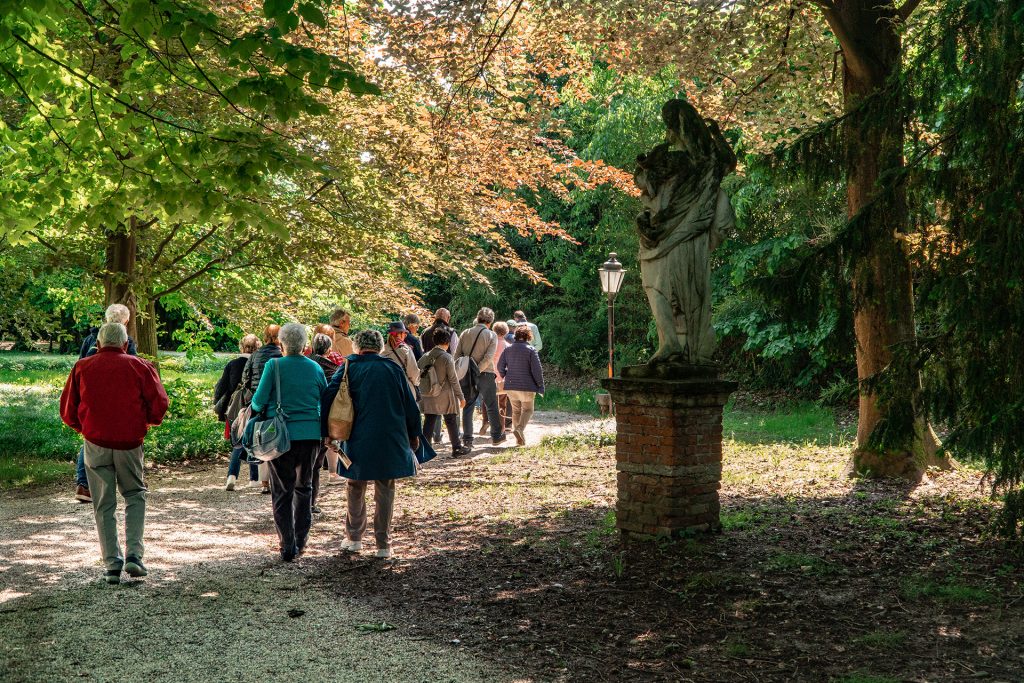Villa Widmann (Mira)
The building complex that makes up the Villa, in addition to the Barchessa and the chapel, was erected at the end of the 18th century by the Sceriman, noble family of Persian origins who had found their fortune in commerce in an area that is still known as la Riscossa. The Sceriman had purchased the land fro the Donà family towards the end of the 1600’s, and indeed, the two older buildings existing near the villa (one was demolished by the Foscari family some years ago) bore the coat of arms of the Donà family.
The building of the villa on the Riscossa property was completed in 1719 and was made up of a simple cube shaped building in addition to a grand farmhouse with a wide portico and annexed chapel. The date is stated above the entrance doors leading into the villa’s ballroom. It is believed that the architect was A. Tirali, due to the similarity of the style of these buildings with the works that have been attributed to this Venetian architect. By examining some of the most ancient pieces of stone included in the farmhouse walls it is believed that the new buildings were erected on the rubble or on the partial demolition of a previous building.
It is most likely that the previous building used to be owned by the Moro family as the family’s coat of arms are still quite evident in the courtyard of the barchessa.
In the prints by Costa “Views of the palace of count Seriman” one can see the main building on the left on the corner where the Pionca river meets the Brenta and on the right the farmhouse is quite clearly depicted with its wide arches that flank the two sides of the building; on the right, slightly detached from the main complex, there is the chapel.
The main building is made up of a square base; from the entrance hall decorated in a classical style on the ground floor, one can access the central hall which in turn provides access to another four rooms.
Just after the mid 1700’s the villa was taken over by the Widman family who proceeded to modernise the main building according to the French rococo taste and extended the barchessa leading it up to the church. The extension works consisted in heightening the central part of the building, the addition of curved gables to some windows and changing the existing ones according to the rococo taste.
The ceiling of the central hall was demolished to provide greater elevation to the room and several bedrooms were made on the second floor. All the rooms were finely decorated with precious polychrome stuccoes.
A new room was added to the chapel that was divided from the main church by a grid; this room was probably used by the women of the family for confession.
Amongst the many illustrious guests who were hosted in the villa there was also the famous playwright Carlo Goldoni who was a friend of Ludovico Widman. The playwright was hosted by the Widmans for a long period of time especially in the Villa of Bagnoli as the same Goldoni recalled in his memoirs. Other famous guests include Cardinal Sarto, at the time Patriarch of Venice, the musicians Malipiero, Igor Stravinsky, the dialect poet Pasto and Gabriele d’Annunzio, friend of Count Pietro Foscari, was often guest.
The Villa has been owned by the Provincial Council of Venice since 1984.
The Garden
The garden, rich in plants, bushes and flowers, branches out north of the villa. Numerous soft stone statues rise against the green pines. They represent nymphs, gods, cupids with their arrows: mute presences that recall the fable-like world of the classics. Marvellous lime trees flank the paths; on the right, beyond the farmhouse, a wide space is delimitated by the low greenhouses where a swimming pool was built in the 1970’s. This is the same time in which the large lake with its monumental fountain and new pathways were built.
The Ballroom
Although rather small, the ballroom of Villa Widman provides the eyes of the beholder a wealth of decorations that find no match anywhere else along the Brenta Riviera. Fully frescoed with scenes depicting myths and decorated with rococo vaults, the hall is characterised by the light gallery set at mid-height along all four walls. At the corners, four perches used to host the singers during receptions.
The rape of Helen by Giuseppe Angeli deserves special attention: a young Paris forcefully lifts Helen moving towards the vessel that is ready to sail away; two sailors hold on to the mooring line while others tend to the sails. The composition is well organised within a pyramid shape, the clear and swift trace underlining the movement of the scene.
“Diana with cupids” has been attributed to G. Angeli: the goddess has just alighted from the carriage that has stopped on white clouds surrounded by cheeky cupids. Below, two flying cherubs hold a vase full of flowers.















